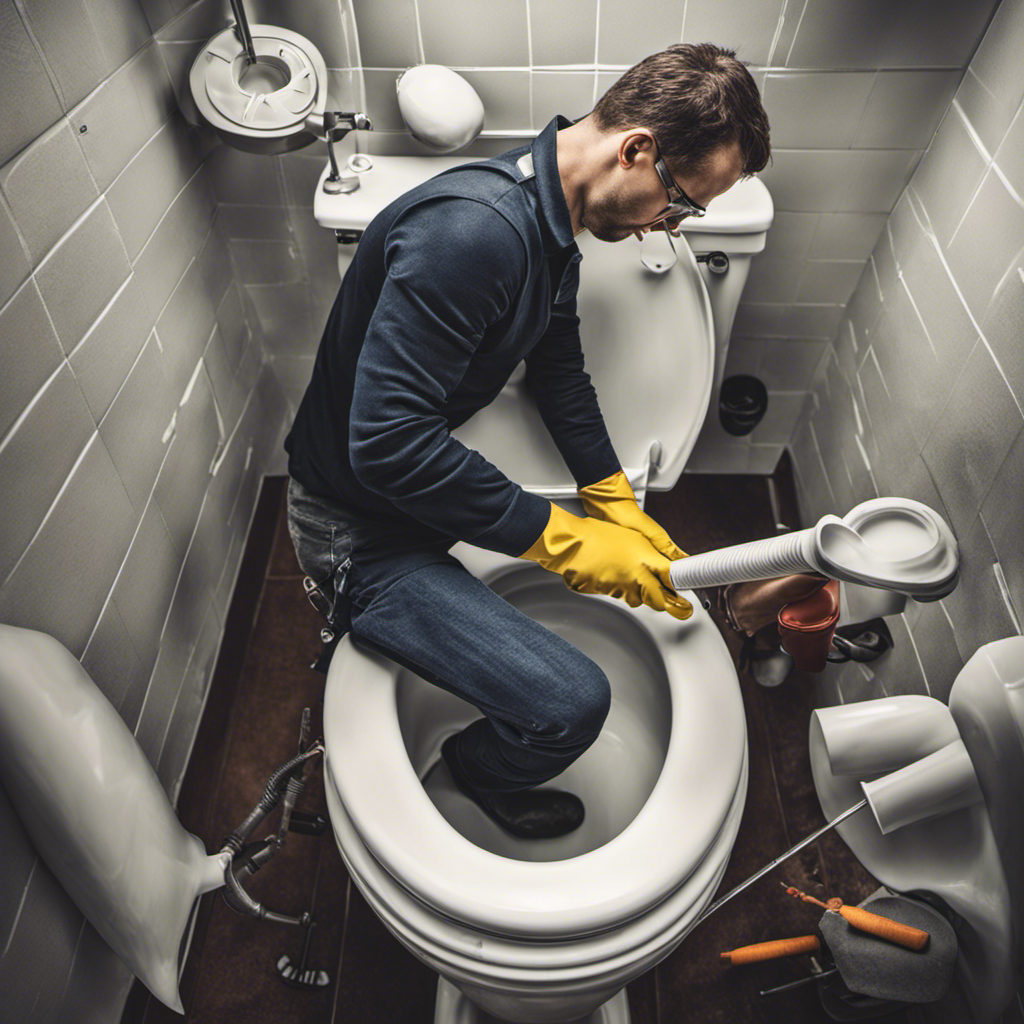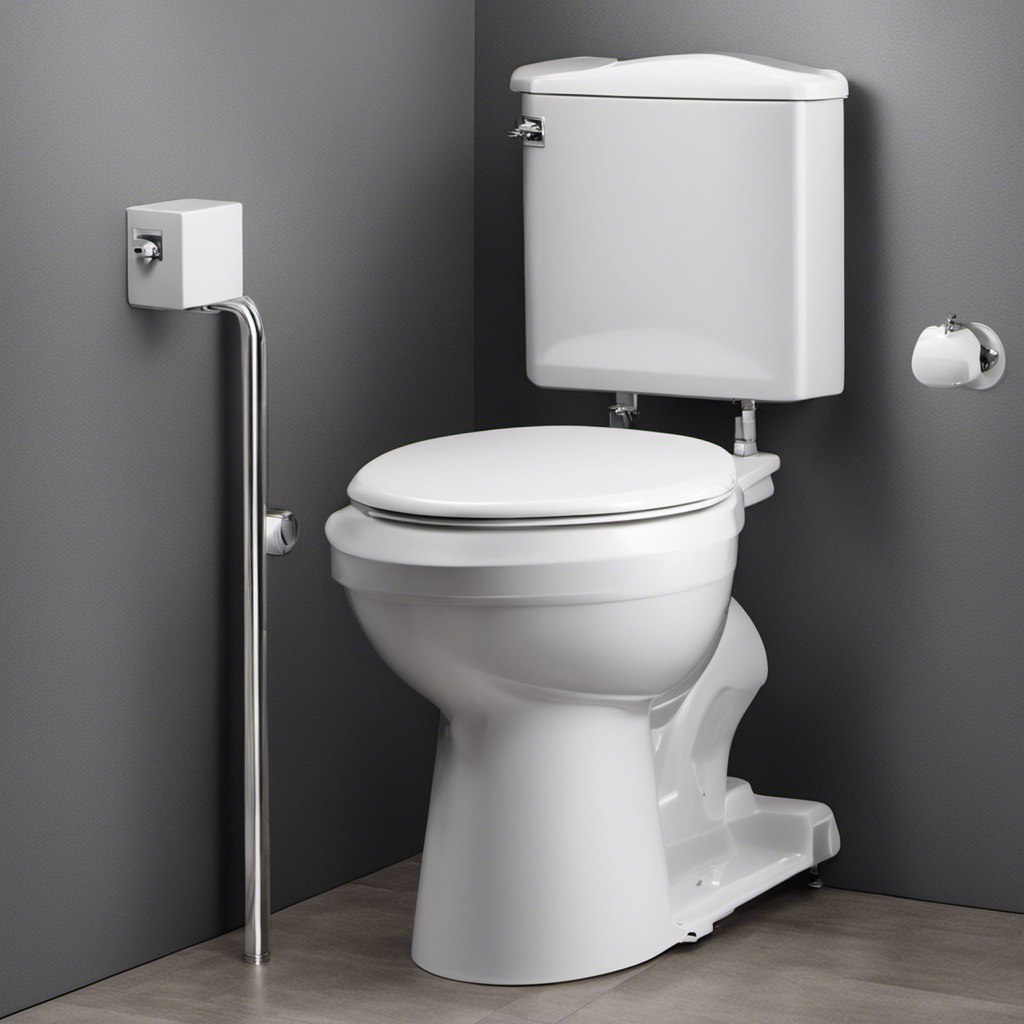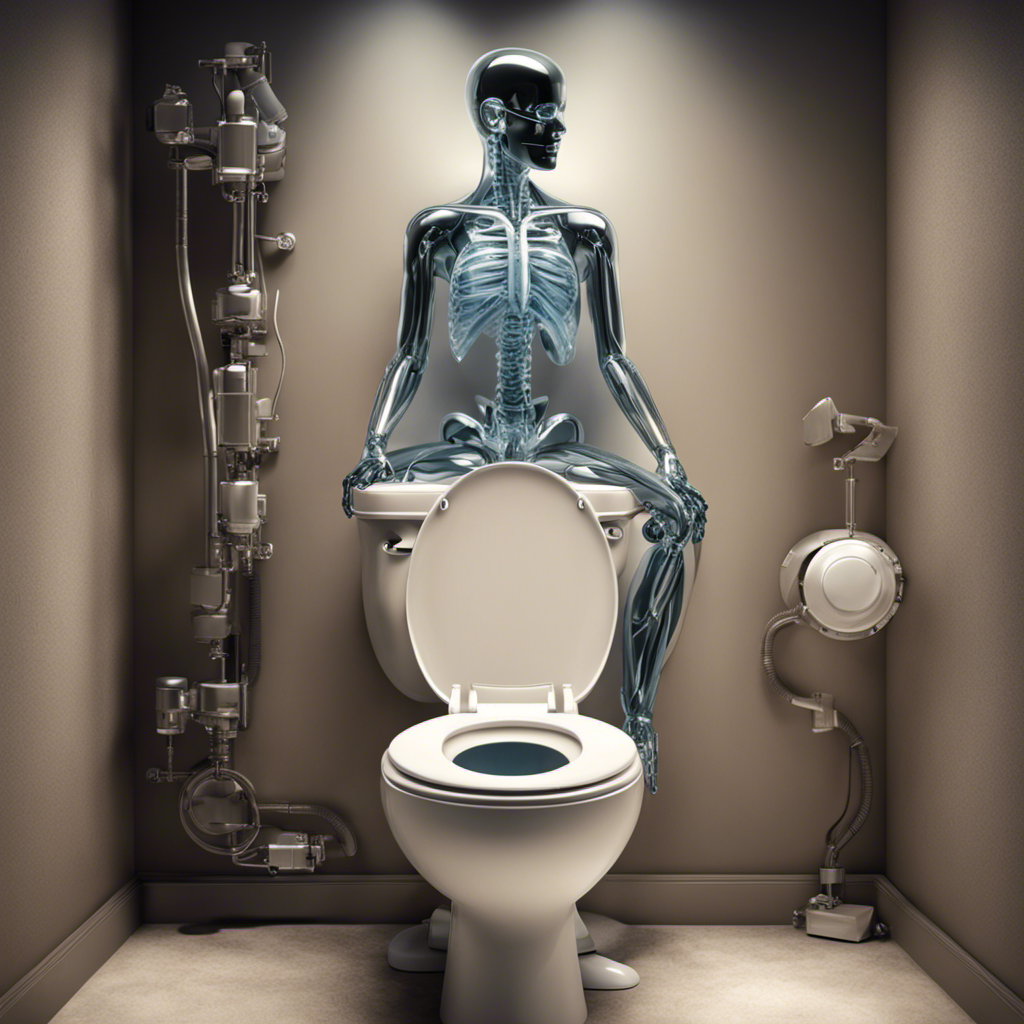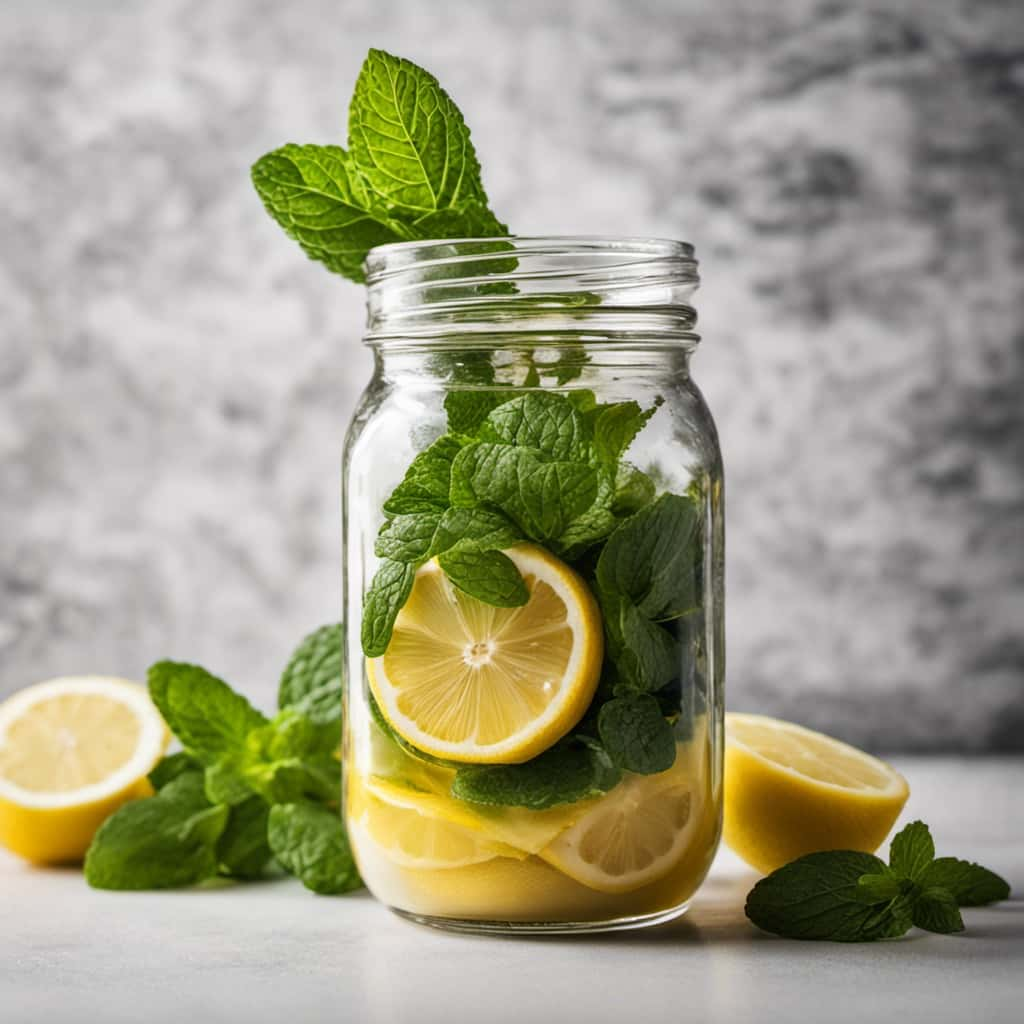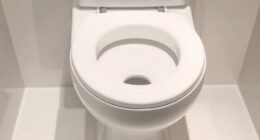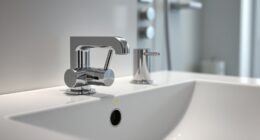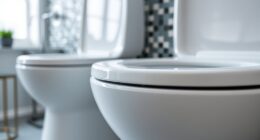I’ve been there – standing in front of a clogged toilet, feeling a mix of frustration and panic. But fear not! In this article, I’ll guide you through the best way to unclog a toilet.
We’ll explore common causes of clogs, the tools you’ll need, and natural methods to try before resorting to calling a professional plumber.
So, roll up your sleeves and let’s dive into the world of unclogging toilets together!
Key Takeaways
- Flushing excessive amounts of toilet paper or non-flushable items can easily cause toilet clogs.
- DIY methods for unclogging a toilet include using a plunger or a toilet auger/snake.
- Essential tools for unclogging a toilet include a plunger, a bucket, and a toilet auger.
- Baking soda and vinegar can be used as a natural method to unclog a toilet without harsh chemicals.
Common Causes of Toilet Clogs
One of the most common causes of toilet clogs is when you flush excessive amounts of toilet paper at once. Toilet clog prevention is essential to avoid these frustrating situations.
To prevent clogs, it’s important to use toilet paper in moderation and flush only small amounts at a time. Additionally, avoid flushing other items such as wipes, feminine hygiene products, or paper towels, as they can easily cause blockages.
If you do encounter a clog, there are several DIY toilet unclogging methods you can try. One effective method is using a plunger to create suction and dislodge the blockage. Another option is using a toilet auger or snake to break up the clog and clear the pipes.
Remember to always use caution and seek professional help if the clog persists.
Tools and Materials You’ll Need
To unclog a toilet, you’ll need a plunger and a bucket. These two tools are essential for tackling toilet clogs effectively. A plunger is designed to create suction and pressure, which helps to dislodge the blockage and restore the flow of water.
A bucket is useful for catching any excess water that may overflow during the unclogging process. Additionally, another tool that can be handy is a toilet auger. This tool has a long, flexible cable that can reach further down the drain to break up stubborn clogs. While a plunger is usually sufficient for most clogs, a toilet auger can be a great backup option for more challenging blockages.
Now that we have the necessary tools, let’s explore some natural methods for unclogging a toilet.
Natural Methods for Unclogging a Toilet
Using natural ingredients like baking soda and vinegar can be an effective and eco-friendly way to tackle a clogged toilet. DIY toilet unclogging methods that are environmentally friendly are becoming increasingly popular.
Baking soda and vinegar are two common household items that can be used to unclog a toilet without the need for harsh chemicals. To use this method, start by pouring one cup of baking soda into the toilet bowl. Then, slowly pour one cup of vinegar into the bowl.
Allow the mixture to sit for about 10 minutes before flushing the toilet. The chemical reaction between the baking soda and vinegar helps to break down the clog and clear the pipes. This method is not only effective but also safe for the environment.
Step-by-Step Guide to Using a Plunger
The first step in using a plunger is making sure there is enough water in the toilet bowl. This is important because the water creates a seal that helps to generate the necessary pressure to unclog the toilet.
Once you have checked the water level, place the plunger over the drain hole and push down firmly. Then, pull up quickly to create suction and repeat this plunging motion several times. It is important to maintain a good seal throughout the process.
After successfully unclogging the toilet, it is crucial to properly clean and maintain your plunger. Rinse it off with hot water and a disinfectant, and make sure it is completely dry before storing it.
Following these tips for preventing toilet clogs and properly maintaining your plunger will help keep your bathroom functioning smoothly.
When to Call a Professional Plumber
If you’re experiencing persistent plumbing issues, it may be time to consider reaching out to a professional plumber. While some minor plumbing problems can be fixed with a little DIY know-how, there are certain signs that indicate a more serious issue that requires professional assistance.
Here are a few key signs to look out for:
- Persistent clogs: If your drains are constantly clogged despite your best efforts to unclog them, it’s a sign that there may be a larger problem lurking in your plumbing system.
- Low water pressure: If you notice a significant decrease in water pressure throughout your home, it could be a sign of a blockage or leak in your pipes.
- Sewage backup: If you experience sewage backup in your sinks, toilets, or drains, it’s crucial to call a plumber immediately as this is a clear indication of a serious plumbing issue.
Conclusion
So there you have it, folks! When it comes to unclogging a toilet, knowledge is power.
Armed with the right tools, a little elbow grease, and some natural remedies, you can tackle those stubborn clogs like a pro.
Remember, don’t be afraid to get your hands dirty and plunge into action.
And if all else fails, don’t hesitate to call in the reinforcements – a professional plumber who can save the day.
Happy unclogging!
